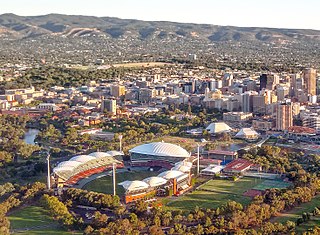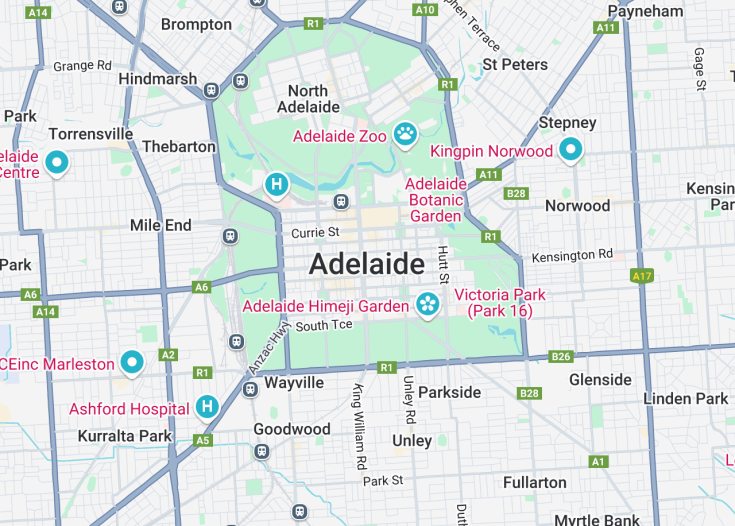Adelaide, the capital city of South Australia, is a captivating blend of heritage and modernity. Known for its vibrant festivals, exquisite culinary scene, and lush parklands surrounding the city center, Adelaide offers a tranquil yet enriching experience for its visitors. It’s home to renowned museums like the Art Gallery of South Australia and events such as the Adelaide Festival, enhancing its cultural tapestry. The city also serves as a gateway to famous wine regions, making it a must-visit for enthusiasts of fine wine and authentic Australian gastronomy.
When visiting Adelaide, ensure to explore its Central Market, a hub for fresh produce and local delicacies, perfect for culinary enthusiasts seeking to taste the region’s flavors.
Plan your trip during March to fully experience the Adelaide Festival and Fringe, offering an array of performances that showcase both international and local talent in a vibrant atmosphere.
Top things to do & see in Adelaide
Select the following sights and activities to discover best tickets and tours available in Adelaide.
Adelaide: A Vibrant Cultural Hub
| Country | Australia |
| Time in Adelaide | GMT+9:30 |
| Language spoken | English |
| Population | 1,336,000 (source: Australian Bureau of Statistics) |
| Currency | Australian Dollar (AUD $) |
| Airports | Adelaide Airport (ADL) (5 miles / 8 km) |
Adelaide, the capital city of South Australia, is renowned for its extensive festivals, exquisite food and wine culture, and its long beachfronts. With a population recently cited at over 1.3 million residents, the city is the fifth-most populous in Australia. It’s characterized by wide boulevards, large public squares, and expansive parklands, earning it the admiration of those fascinated by urban design and effective city planning.
Founded in 1836, Adelaide was planned as a freely-settled British province, unlike other Australian capitals that began as penal colonies. The city was named in honor of Queen Adelaide, consort to King William IV. Its layout, known as the Light’s Vision, arranged Adelaide in a grid, interspaced by public squares, and entirely surrounded by parkland. This thoughtful planning has contributed to its accessible and peaceful city environment still noticeable today.
Adelaide’s cultural contributions are notable with multiple festivals and sports events which have fostered a comprehensive music and arts scene. The Adelaide Festival, WOMADelaide, and the Fringe Festival draw international artists and crowds. Meanwhile, the city’s museums, such as the South Australian Museum and Art Gallery of South Australia, house important collections fostering a strong link to the Indigenous Australian heritage.
The area’s economy and livelihoods originally flourished due to mining and agriculture, which transitioned into today’s industries that support the broader South Australian community. Adelaide is also known for educational institutions including the University of Adelaide, University of South Australia, and Flinders University, making it a hub for international research and higher education.
With its Mediterranean climate and a location ripe for various outdoor activities ranging from hiking in the nearby Mount Lofty Ranges to swimming at the beaches of Gulf St Vincent, Adelaide provides an exceptional quality of life that attracts visitors and seasoned travelers seeking a blend between urban settlement and natural beauty.
Where is Adelaide?
Adelaide is centrally located on the southern coast of Australia, sitting on the eastern shores of Gulf St Vincent.
Distances:
| Route | Distance by car | Time by car |
|---|---|---|
| Sydney to Adelaide | 863 miles (1389 km) | Approx. 14 hours |
| Melbourne to Adelaide | 448 miles (721 km) | Approx. 8 hours |
What is Adelaide famous for?
Adelaide is particularly noted for its vibrant arts scene, rich array of festivals, diverse culinary offerings, and high regard for sustainability and green urban planning.
History
Pre-1836: Indigenous Cultures
The region now known as Adelaide was originally inhabited by the Kaurna people, an Indigenous Australian group who lived and managed the land through complex kinship systems and Dreaming stories. They referred to the Adelaide plains as “Tarndanya,” which translates to “the place of the red kangaroo.” The Kaurna culture was rich in ceremony, arts, and a deep understanding of the environment, elements that sustained their society for thousands of years before European settlement.
1836-1900: European Settlement and Development
Adelaide was founded in 1836 by Colonel William Light, under a directive from the British government, which sought to establish a freely-settled colony in Australia. Unlike other Australian cities, Adelaide was planned with a simple grid layout surrounded by parklands. This period marked a rapid transformation from a hostile wilderness into a structured urban environment. Early settlers included European and other migrants who contributed to the city’s demographic and cultural makeup. Throughout the 19th century, Adelaide became the center of government and commerce in South Australia, witnessing construction of significant architecture such as government buildings and churches.
1901-1945: Growth and Militarization
Following federation in 1901, Adelaide continued to grow and expand industrially. World War I and World War II saw significant contributions from the city in terms of enlistment and industry. The establishment of manufacturing plants and the expansion of the railway network were crucial during this time. The inter-war period also brought modernist influences in the architecture of Adelaide, reflecting new technologies and societal shifts.
1946-Present: Modernization and Expansion
In the post-war years, Adelaide expanded rapidly with suburbs sprawling around the central business district. The establishment of institutions like the University of Adelaide and various cultural festivals has contributed to a vibrant city life. Economic reforms in the 1980s and technological advancements fostered a climate of innovation and entrepreneurship. Today, Adelaide is known for its festivals, educational institutions, commercial areas, and as a leader in sustainable living practices, continuing to evolve while maintaining its historical charm and significance.
Visit Adelaide
What to see and do in Adelaide, Australia.
Adelaide, the capital city of South Australia, offers a blend of historic charm and modern convenience. It is well known for its extensive festivals, gastronomic delights, and internationally renowned wine regions. Visitors can explore the Adelaide Central Market, the cultural boulevard of North Terrace, home to the South Australian Museum and the Art Gallery of South Australia, and take a trip to the beautiful Adelaide Hills. Outdoor enthusiasts will enjoy the coastal activities at Glenelg, bustling with shops and cafes. For a serene escape, the nearby Barossa Valley offers some of the world’s best wineries and tasting experiences.
Annual Events in Adelaide
Adelaide is host to a number of vibrant festivals and events throughout the year. Key events include the Adelaide Fringe Festival, the largest arts festival in the Southern Hemisphere, which occurs every February to March. Another highlight is the Adelaide Festival, renowned for its innovative international arts programming in March. Additionally, food lovers gather for Tasting Australia, a celebration of regional produce and culinary arts, held annually in autumn.
Best time to visit Adelaide
The best period to visit Adelaide is during the spring (September to November) and autumn (March to May). During these months, the weather is mild, making it ideal for exploring the city’s outdoors and the surrounding wine regions. Spring also welcomes a burst of colorful flora in the city parks, adding to its scenic beauty.
Is Adelaide worth visiting?
Indeed, Adelaide is well worth a visit. Offering a vibrant mix of cultural, historical, and gastronomic experiences, the city provides a less hurried yet equally enriching alternative to Australia’s more eastern capitals. Whether you are exploring its rich heritage at the many museums, enjoying the lush landscapes of its parks, or indulging in world-class wine, Adelaide promises a balanced blend of activities for all kinds of travelers.










